The Impact of Incorporating Five Different Boron Materials into a Dental Composite on Its Mechanical Properties
Abstract
1. Introduction
2. Material & Methods
2.1. The Calculation of Sample Size
2.2. The Selection of Composite & Boron Materials and the Design of the Study
2.3. Surface Microhardness
2.4. Surface Roughness
2.5. The Stabilization of Color
2.6. Statistical Analysis
3. Results
4. Discussion
5. Conclusions
Author Contributions
Funding
Institutional Review Board Statement
Informed Consent Statement
Data Availability Statement
Conflicts of Interest
References
- DeFrancesco, H.; Dudley, J.; Coca, A. Boron Chemistry: An Overview. In Boron Reagents in Synthesis; American Chemical Society: Washington, DC, USA, 2016; pp. 1–25. [Google Scholar]
- Biţă, A.; Scorei, I.R.; Bălşeanu, T.A.; Ciocîlteu, M.V.; Bejenaru, C.; Radu, A.; Bejenaru, L.E.; Rău, G.; Mogoşanu, G.D.; Neamţu, J.; et al. New insights into boron essentiality in humans and animals. Int. J. Mol. Sci. 2022, 23, 9147. [Google Scholar] [CrossRef] [PubMed]
- Demirci, S.; Kaya, M.S.; Doğan, A.; Kalay, Ş.; Altın, N.Ö.; Yarat, A.; Akyüz, S.H.; Şahin, F. Antibacterial and cytotoxic properties of boron-containing dental composite. Turk. J. Bıol. 2015, 39, 417–426. [Google Scholar] [CrossRef]
- Scorei, R. Is Boron a Prebiotic Element? A Mini-Review of the Essentiality of Boron for the Appearance of Life on Earth. Orig. Life Evol. Biosph. 2012, 42, 3–17. [Google Scholar] [CrossRef] [PubMed]
- Mitruţ, I.; Scorei, I.R.; Manolea, H.O.; Biţă, A.; Mogoantă, L.; Neamţu, J.; Bejenaru, L.E.; Ciocîlteu, M.V.; Bejenaru, C.; Rău, G.; et al. Boron-containing compounds in Dentistry: A narrative review. Rom. J. Morphol. Embryol. 2022, 63, 477. [Google Scholar] [CrossRef] [PubMed]
- Abdulai, D.; Cengiz, S. The effect of boron addition on the prosthetic dental materials: A review. Int. J. Appl. Dent. Sci. 2023, 9, 31–37. [Google Scholar] [CrossRef]
- Hakki, S.S.; Götz, W.; Dundar, N.; Kayis, S.A.; Malkoc, S.; Hamurcu, M.; Basoglu, A.; Nielsen, F.H. Borate and boric acid supplementation of drinking water alters teeth and bone mineral density and composition differently in rabbits fed a high protein and energy diet. J. Trace Elem. Med. Biol. 2021, 67, 126799. [Google Scholar] [CrossRef]
- Toker, H.; Ozdemir, H.; Yuce, H.B.; Goze, F. The effect of boron on alveolar bone loss in osteoporotic rats. J. Dent. Sci. 2016, 11, 331–337. [Google Scholar] [CrossRef]
- Sopcak, T.; Medvecky, L.; Jevinova, P.; Giretova, M.; Mahun, A.; Kobera, L.; Stulajterova, R.; Kromka, F.; Girman, V.; Balaz, M. Physico-chemical, mechanical and antibacterial properties of the boron modified biphasic larnite/bredigite cements for potential use in dentistry. Ceram. Int. 2023, 49, 6531–6544. [Google Scholar] [CrossRef]
- Luan, Q.; Desta, T.; Chehab, L.; Sanders, V.J.; Plattner, J.; Graves, D.T. Inhibition of Experimental Periodontitis by a Topical Boron-Based Antimicrobial. J. Dent. Res. 2008, 87, 148–152. [Google Scholar] [CrossRef]
- Zhu, J.; Kamiya, A.; Yamada, T.; Shi, W.; Naganuma, K. Influence of boron addition on microstructure and mechanical properties of dental cast titanium alloys. Mater. Sci. Eng. A 2003, 339, 53–62. [Google Scholar] [CrossRef]
- Alansy, A.S.; Saeed, T.A.; Al-Attab, R.; Guo, Y.; Yang, Y.; Liu, B.; Fan, Z. Boron nitride nanosheets modified with zinc oxide nanoparticles as novel fillers of dental resin composite. Dent. Mater. 2022, 38, e266–e274. [Google Scholar] [CrossRef] [PubMed]
- Rad, R.M.; Alshemary, A.Z.; Evis, Z.; Keskin, D.; Altunbaş, K.; Tezcaner, A. Structural and biological assessment of boron doped bioactive glass nanoparticles for dental tissue applications. Ceram. Int. 2018, 44, 9854–9864. [Google Scholar]
- Degrazia, F.W.; Leitune, V.C.B.; Samuel, S.M.W.; Collares, F.M. Boron nitride nanotubes as novel fillers for improving the properties of dental adhesives. J. Dent. 2017, 62, 85–90. [Google Scholar] [CrossRef] [PubMed]
- Degrazia, F.W.; Leitune, V.C.B.; Visioli, F.; Samuel, S.M.W.; Collares, F.M. Long-term stability of dental adhesive incorporated by boron nitride nanotubes. Dent. Mater. 2018, 34, 427–433. [Google Scholar] [CrossRef] [PubMed]
- Bohns, F.R.; Degrazia, F.W.; de Souza Balbinot, G.; Leitune, V.C.B.; Samuel, S.M.W.; García-Esparza, M.A.; Sauro, S.; Collares, F.M. Boron Nitride Nanotubes as Filler for Resin-Based Dental Sealants. Sci. Rep. 2019, 9, 7710. [Google Scholar] [CrossRef] [PubMed]
- Beyth, N.; Yudovin-Farber, I.; Bahir, R.; Domb, A.J.; Weiss, E.I. Antibacterial activity of dental composites containing quaternary ammonium polyethylenimine nanoparticles against Streptococcus mutans. Biomaterials 2006, 27, 3995–4002. [Google Scholar] [CrossRef]
- Elfakhri, F.; Alkahtani, R.; Li, C.; Khaliq, J. Influence of filler characteristics on the performance of dental composites: A comprehensive review. Ceram. Int. 2022, 48, 27280–27294. [Google Scholar] [CrossRef]
- Fidalgo-Pereira, R.; Evangelista Carpio, D.M.; Carvalho, Ó.; Catarino, S.; Torres, O.; MSouza, J.C. Relationship between the inorganic content and the polymerization of the organic matrix of resin composites for dentistry: A narrative review. Revsalus Rev. Científica Rede Académica Ciências Saúde Lusofonia 2022, 4, 136. [Google Scholar] [CrossRef]
- Kasseh, A.; Ait-Kadi, A.; Riedl, B.; Pierson, J.F. Organic/inorganic hybrid composites prepared by polymerization compounding and controlled free radical polymerization. Polymer 2003, 44, 1367–1375. [Google Scholar] [CrossRef]
- Zhang, J.F.; Wu, R.; Fan, Y.; Liao, S.; Wang, Y.; Wen, Z.T.; Xu, X. Antibacterial Dental Composites with Chlorhexidine and Mesoporous Silica. J. Dent. Res. 2014, 93, 1283–1289. [Google Scholar] [CrossRef] [PubMed]
- Kasraei, S.; Sami, L.; Hendi, S.; AliKhani, M.-Y.; Rezaei-Soufi, L.; Khamverdi, Z. Antibacterial properties of composite resins incorporating silver and zinc oxide nanoparticles on Streptococcus mutans and Lactobacillus. Restor. Dent. Endod. 2014, 39, 109. [Google Scholar] [CrossRef] [PubMed]
- Liu, Y.-J.; Su, W.-T.; Chen, P.-H. Magnesium and zinc borate enhance osteoblastic differentiation of stem cells from human exfoliated deciduous teeth in vitro. J. Biomater. Appl. 2018, 32, 765–774. [Google Scholar] [CrossRef] [PubMed]
- Ramazani, S.A.A.; Rahimi, A.; Frounchi, M.; Radman, S. Investigation of flame retardancy and physical–mechanical properties of zinc borate and aluminum hydroxide propylene composites. Mater. Des. 2008, 29, 1051–1056. [Google Scholar] [CrossRef]
- Akinci, A. Study on the wear properties of zinc borate filled polycarbonate composites against 4140 steel under dry friction. Int. J. Polym. Anal. Charact. 2017, 22, 310–317. [Google Scholar] [CrossRef]
- Özdemir, A.K.; Özdemir Doğan, D.; Tuğut, F.; Demir, H.; Akın, H. Effects of boron on the mechanical properties of polymethylmethacrylate denture base material. Eur. Oral Res. 2021, 55, 45–53. [Google Scholar] [CrossRef]
- Yılmaz, H.; Ozbek, E.N.; Işel, E.; Butuner, B.D.; Anacak, G.Y.; Koparal, A.T.; Ulus, G. Evaluation of Borax Pentahydrate as a Novel Antiangiogenic Agent. Res. Sq. 2023. preprint. [Google Scholar] [CrossRef]
- Kıvanç, M.; Barutca, B.; Koparal, A.T.; Göncü, Y.; Bostancı, S.H.; Ay, N. Effects of hexagonal boron nitride nanoparticles on antimicrobial and antibiofilm activities, cell viability. Mater. Sci. Eng. C 2018, 91, 115–124. [Google Scholar] [CrossRef]
- Kaizer, M.R.; de Oliveira-Ogliari, A.; Cenci, M.S.; Opdam, N.J.M.; Moraes, R.R. Do nanofill or submicron composites show improved smoothness and gloss? A systematic review of in vitro studies. Dent. Mater. 2014, 30, e41–e78. [Google Scholar] [CrossRef]
- Nascimento, G.G.; Correa, M.B.; Opdam, N.; Demarco, F.F. Do Clinical Experience Time and Postgraduate Training Influence the Choice of Materials for Posterior Restorations? Results of a Survey with Brazilian General Dentists. Braz. Dent. J. 2013, 24, 642–646. [Google Scholar] [CrossRef]
- Miletic, V. Dental Composite Materials for Direct Restorations; Springer International Publishing: Cham, Switzerland, 2018. [Google Scholar]
- Oksal, B.S.; Gencer, A. Hydroboratıon Synthesıs, Characterızatıon and Bıologıcal Actıvıty of Novel Cyclıc Preceramıc Polymers: Transıtıon to SiBOC Ceramıcs. Ceram. Silikáty 2015, 59, 341–347. [Google Scholar]
- Dinçkal Yanıkoğlu, N.; Sakarya, R.E. Test methods used in the evaluation of the structure features of the restorative materials: A literature review. J. Mater. Res. Technol. 2020, 9, 9720–9734. [Google Scholar] [CrossRef]
- Nair, K.C.; Dathan, P.C.; Sreeba, S.B.; Soman, A.K. Hardness of Dental Materials Is an Essential Property That Determines the Life of Restorations—An Overview. ACTA Sci. Dent. Sci. 2022, 6, 129–134. [Google Scholar] [CrossRef]
- Filija, E.; Šalinović, I. Microhardness testing: Can we measure the repair of demineralized lesion? Sonda List Studenata Stomatol. Fak. Sveučilišta Zagreb. 2022, 21, 44–47. [Google Scholar]
- ISO 4049:2019; Dentistry—Polymer-Based Restorative Materials. ISO: Geneva, Switzerland, 2019.
- Ferracane, J.L. Hygroscopic and hydrolytic effects in dental polymer networks. Dent. Mater. 2006, 22, 211–222. [Google Scholar] [CrossRef] [PubMed]
- Manhart, J.; Kunzelmann, K.-H.; Chen, H.Y.; Hickel, R. Mechanical properties of new composite restorative materials. J. Biomed. Mater. Res. 2000, 53, 353–361. [Google Scholar] [CrossRef] [PubMed]
- Topcu, F.T.; Erdemir, U.; Sahinkesen, G.; Yildiz, E.; Uslan, I.; Acikel, C. Evaluation of microhardness, surface roughness, and wear behavior of different types of resin composites polymerized with two different light sources. J. Biomed. Mater. Res. B Appl. Biomater. 2010, 92, 470–478. [Google Scholar] [CrossRef] [PubMed]
- Yildirim Ucuncu, M.; Ucuncu, M.K. Comparison of the Mechanical Properties of Various Microhybrid Dental Composites. Eurasian Dent. Res. 2023, 1, 58–64. [Google Scholar]
- Zhu, S.; Platt, J. Curing Efficiency of Three Different Curing Modes at Different Distances for Four Composites. Oper. Dent. 2011, 36, 362–371. [Google Scholar] [CrossRef]
- Leprince, J.; Devaux, J.; Mullier, T.; Vreven, J.; Leloup, G. Pulpal-Temperature Rise and Polymerization Efficiency of LED Curing Lights. Oper. Dent. 2010, 35, 220–230. [Google Scholar] [CrossRef]
- Ozan, G.; Sar Sancakli, H.; Yucel, T. Effect of black tea and matrix metalloproteinase inhibitors on eroded dentin in situ. Microsc. Res. Tech. 2020, 83, 834–842. [Google Scholar] [CrossRef]
- Bollen, C.M.L.; Lambrechts, P.; Quirynen, M. Comparison of surface roughness of oral hard materials to the threshold surface roughness for bacterial plaque retention: A review of the literature. Dent. Mater. 1997, 13, 258–269. [Google Scholar] [CrossRef]
- Jang, J.-H.; Park, S.-H.; Hwang, I.-N. Polymerization Shrinkage and Depth of Cure of Bulk-Fill Resin Composites and Highly Filled Flowable Resin. Oper. Dent. 2015, 40, 172–180. [Google Scholar] [CrossRef]
- Poggio, C.; Ceci, M.; Beltrami, R.; Mirando, M.; Wassim, J.; Colombo, M. Color stability of esthetic restorative materials: A spectrophotometric analysis. Acta Biomater. Odontol. Scand. 2016, 2, 95–101. [Google Scholar] [CrossRef] [PubMed]
- Parameswaran, V.; Anilkumar, S.; Lylajam, S.; Rajesh, C.; Narayan, V. Comparison of accuracies of an intraoral spectrophotometer and conventional visual method for shade matching using two shade guide systems. J. Indian Prosthodont. Soc. 2016, 16, 352–358. [Google Scholar] [CrossRef] [PubMed]
- Ceci, M.; Viola, M.; Rattalino, D.; Beltrami, R.; Colombo, M.; Poggio, C. Discoloration of different esthetic restorative materials: A spectrophotometric evaluation. Eur. J. Dent. 2017, 11, 149–156. [Google Scholar] [CrossRef] [PubMed]
- Yap, A.U.J.; Sim, C.P.C.; Loh, W.L.; Teo, J.H. Human-eye versus computerized color matching. Oper. Dent. 1999, 24, 358–363. [Google Scholar]
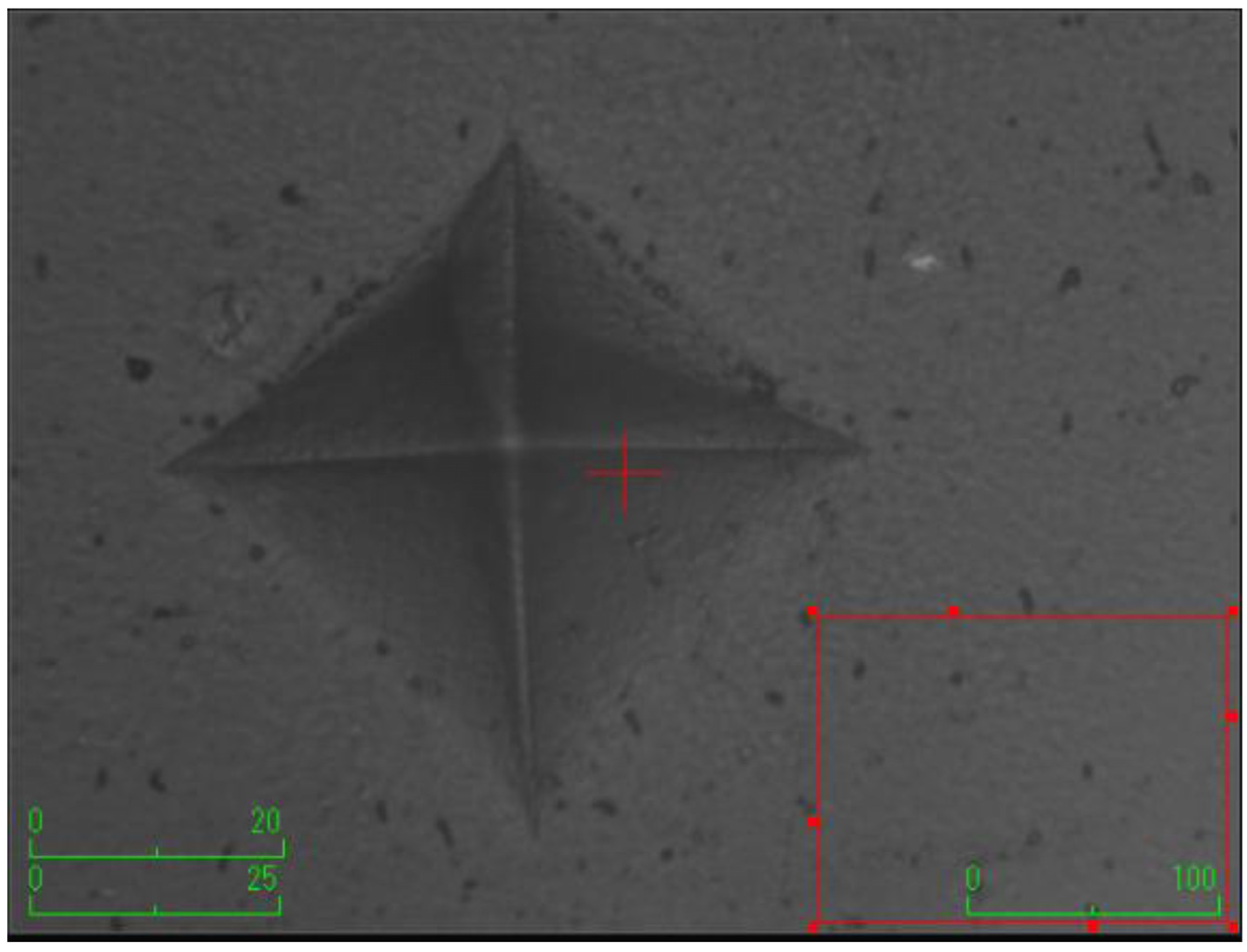

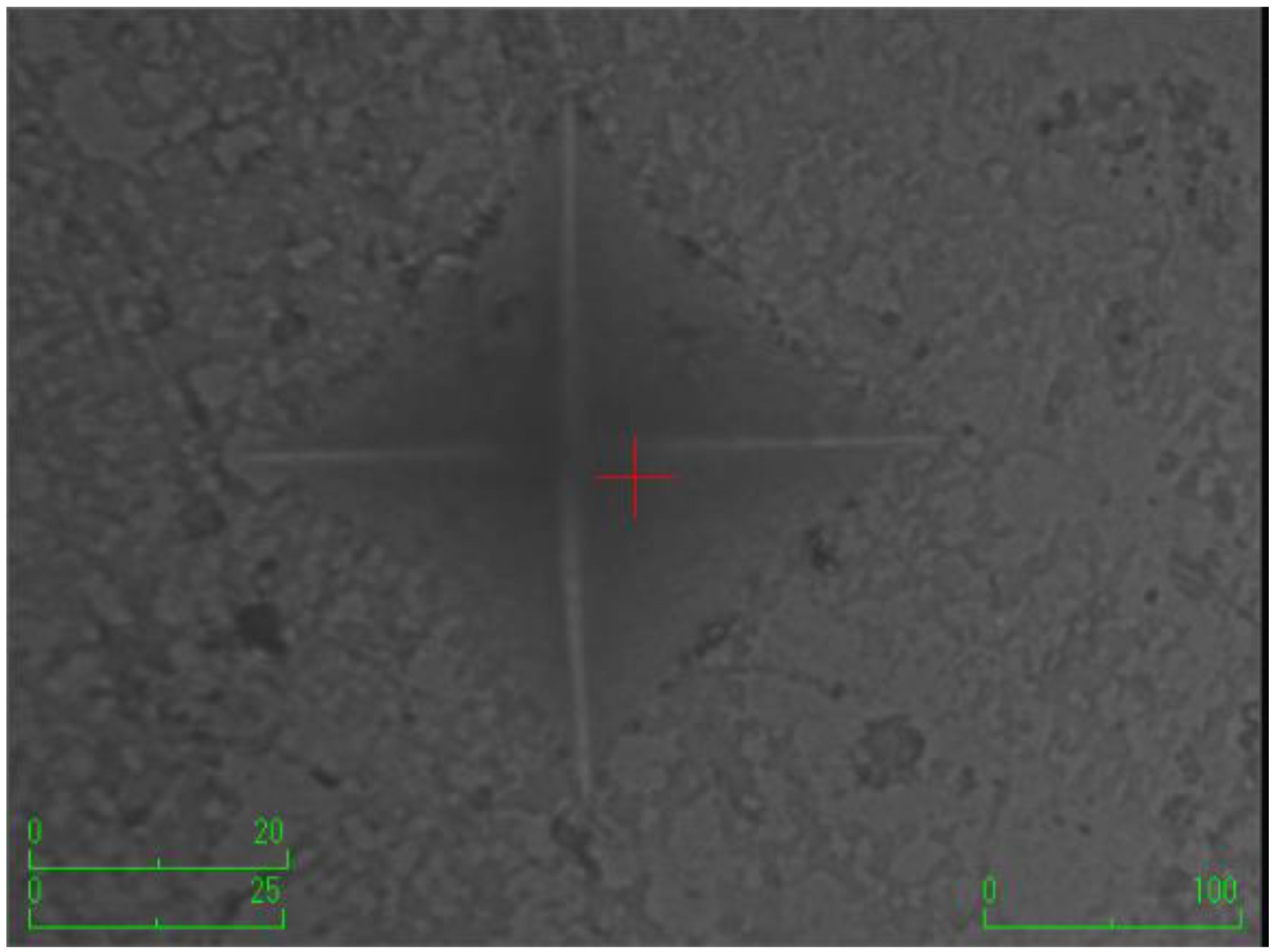
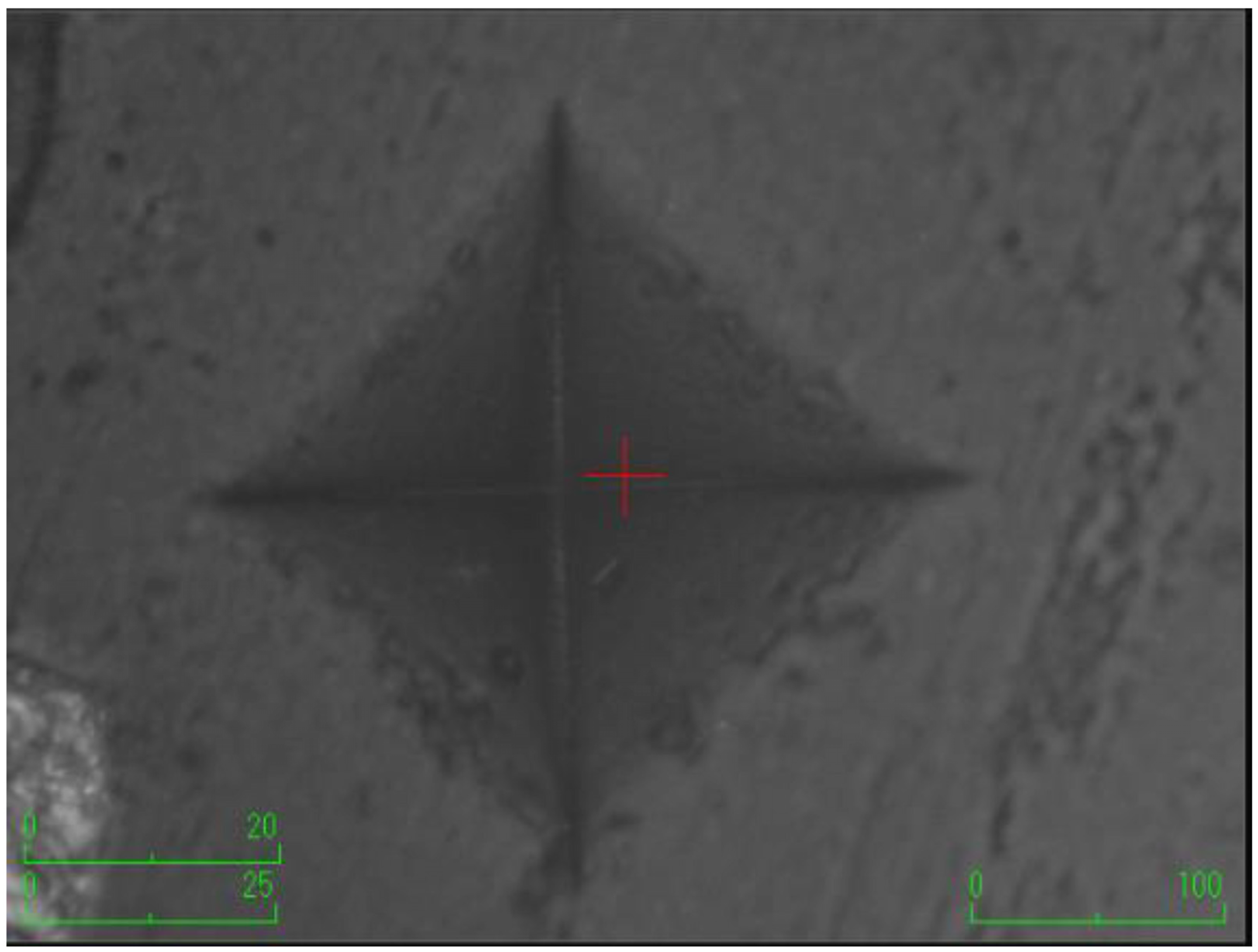
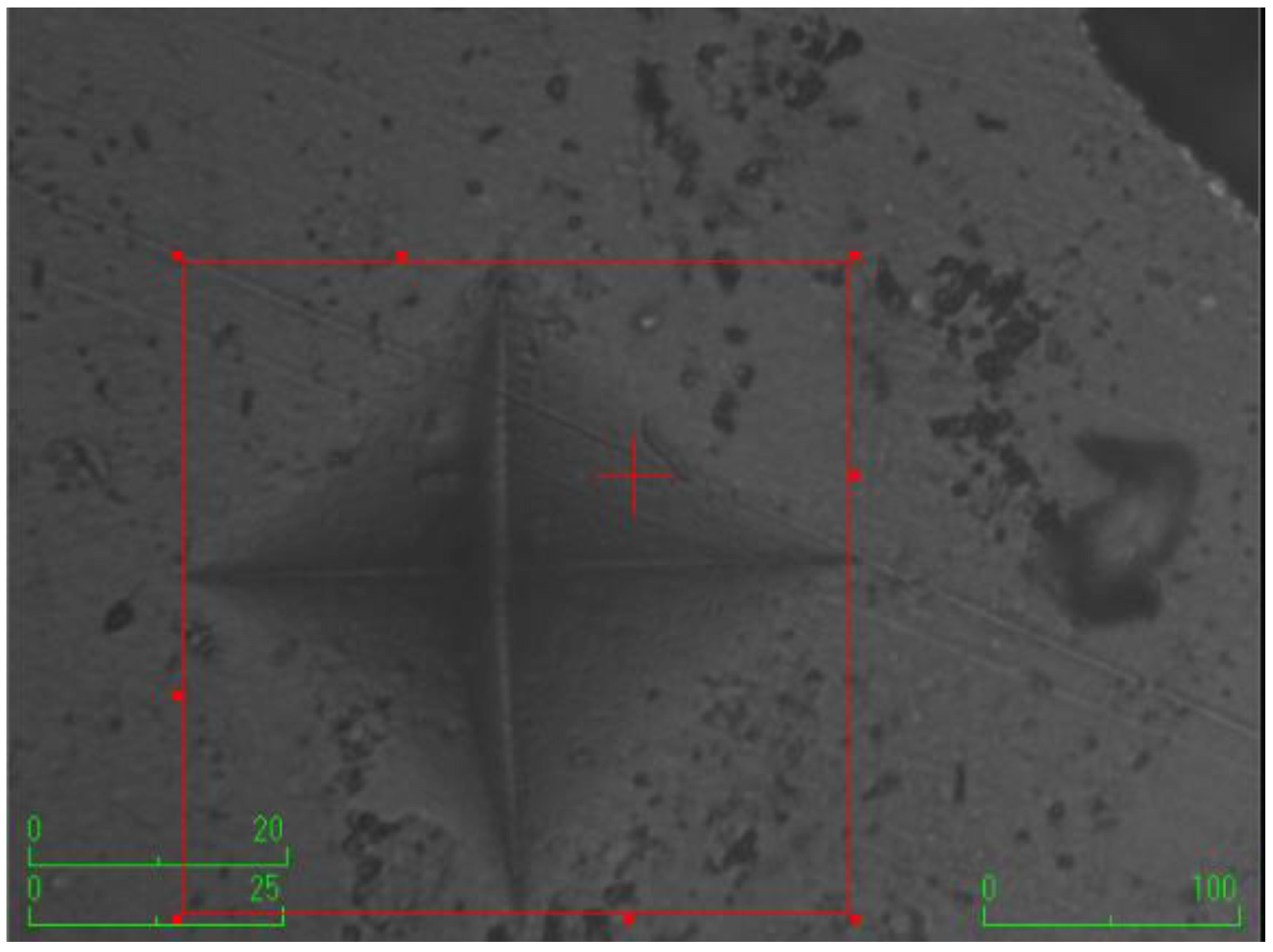
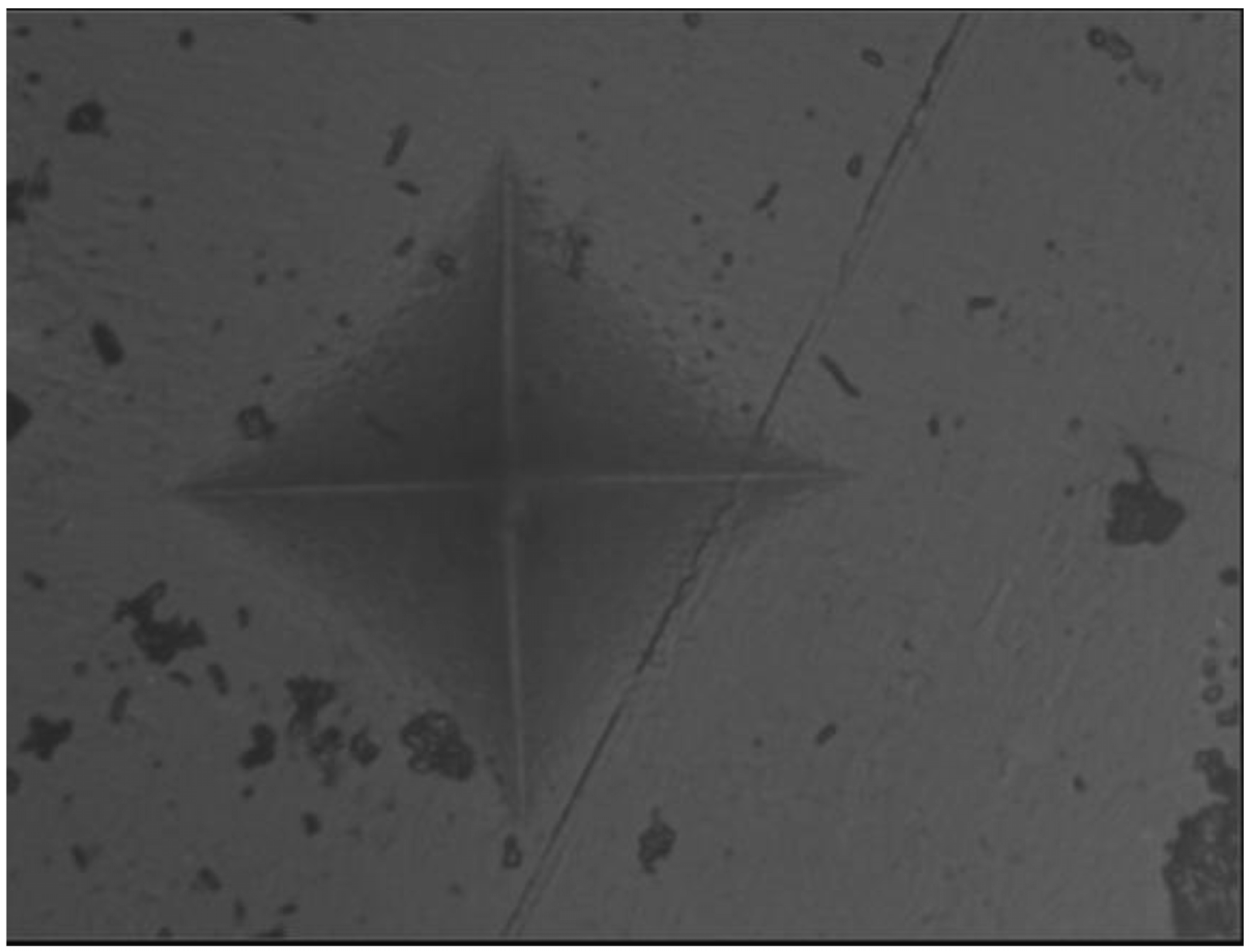
| Added Boron Derivatives | Chemical Name | Component | Content | Particle Size Spesification | CAS |
|---|---|---|---|---|---|
| Zinc borate | Dodecaboron tetrazinc docosaoxide heptahydrate (2ZnO·3B2O3·3.5H2O) | B2O3 | 46.80–49.20% | D50, µm (10 max.) | 138265-88-0 |
| ZnO | 36.30–38.70% | ||||
| Borax pentahydrate | Disodium tetraborate pentahydrate (Na2B4O7·5H2O) | B2O3 | 47.80–49.00 | +1.180 mm (2.00% max.) −0.075 mm (50.00% max.) | 12179-04-3 |
| Equivalent Na2B4O7·5H2O | 100.00–102.51% | ||||
| Na2O | 21.36–21.81% | ||||
| SO4 | 200 ppm max. | ||||
| Cl | 70 ppm max. | ||||
| Fe | 3 ppm max. | ||||
| Insolubles in water | 150 ppm max. | ||||
| Etifert | Orthoboric acid Micronutrient fertilizer (H3BO3) | B | 17.00% min. | +1.000 mm −0.063 mm | 10043-35-3 |
| Eticol-ceramic | Di-calcium hexaborate pentahydrate (2CaO·3B2O3·5H2O) | B2O3 | 42.00 ± 1.00% | −75 µm (82.00% min.) | 1318-33-8 |
| CaO | 23.00 ± 26.00% | ||||
| SiO2 | 3.00 ± 7.00% | ||||
| SO4 | 0.80% max. | ||||
| Fe2O3 | 0.12–0.30% | ||||
| Al2O3 | 0.30–0.80% | ||||
| MgO | 1.50–3.00% | ||||
| Moisture | 1.00% max. | ||||
| Boric acid (Ultra low Sulphate) | Orthoboric acid (H3BO3) | B2O3 | 56.25–56.90% | +1.000 mm (0.00% max.) −0.125 mm (45.00% min.) | 10043-35-3 |
| Equivalent H3BO3 | 99.92–101.07% | ||||
| SO4 | 12 ppm max. | ||||
| Cl | 3 ppm max. | ||||
| Fe | 3 ppm max. |
| Group | Mean | Std. Dev. | Median | Min. | Max. | * p | |
|---|---|---|---|---|---|---|---|
| Surface microhardness (Upper surface) | Control | 44.17 b | 3.74 | 43.90 | 38.30 | 54.30 | 0.001 |
| Zinc borate | 47.63 a | 9.07 | 47.90 | 31.80 | 71.40 | ||
| Borax pentahydrate | 45.87 b | 2.92 | 45.60 | 40.50 | 51.00 | ||
| Etifert | 37.12 c | 4.20 | 36.80 | 31.40 | 49.60 | ||
| Eticol-ceramic | 45.81 b | 3.33 | 45.40 | 38.50 | 50.70 | ||
| Boric acid | 43.10 b | 5.85 | 43.10 | 33.20 | 57.20 | ||
| Surface microhardness (Lower surface) | Control | 40.86 a | 6.39 | 39.20 | 31.60 | 61.30 | 0.001 |
| Zinc borate | 31.24 c | 9.02 | 34.30 | 11.30 | 45.50 | ||
| Borax pentahydrate | 34.65 b | 4.59 | 35.30 | 27.80 | 43.30 | ||
| Etifert | 20.36 d | 4.74 | 21.40 | 13.50 | 27.20 | ||
| Eticol-ceramic | 17.01 d | 5.75 | 15.30 | 9.23 | 30.20 | ||
| Boric acid | 36.95 b | 6.85 | 35.90 | 26.50 | 51.30 | ||
| Mean Differences (Upper & Lower) | Control | 3.30 d | 6.59 | 4.80 | −13.40 | 12.20 | 0.001 |
| Zinc borate | 16.40 b | 8.80 | 18.40 | −6.10 | 29.40 | ||
| Borax pentahydrate | 11.22 c | 4.63 | 10.60 | 2.90 | 21.60 | ||
| Etifert | 16.76 b | 7.86 | 14.40 | 8.30 | 35.60 | ||
| Eticol-ceramic | 28.81 a | 6.96 | 28.60 | 13.70 | 37.40 | ||
| Boric acid | 6.15 d | 7.36 | 7.60 | −8.50 | 19.50 |
| Group | Mean | Std. Dev. | Median | Min. | Max. | * p | |
|---|---|---|---|---|---|---|---|
| Surface Roughness (Ra) | Control | 0.63 d | 0.39 | 0.60 | 0.20 | 1.60 | 0.001 |
| Zinc borate | 0.70 c | 0.54 | 0.50 | 0.00 | 1.80 | ||
| Borax pentahydrate | 1.10 b | 0.86 | 1.10 | 0.20 | 3.30 | ||
| Etifert | 1.80 a | 0.98 | 1.90 | 0.30 | 3.80 | ||
| Eticol-ceramic | 0.53 d | 0.35 | 0.40 | 0.20 | 1.30 | ||
| Boric acid | 1.40 a | 1.25 | 1.20 | 0.20 | 5.50 |
| Group | Mean | Std. Dev. | Median | Min. | Max. | * p | |
|---|---|---|---|---|---|---|---|
| Colour Stabilization ΔE | Zinc borate | 3.15 b | 1.28 | 3.06 | 1.22 | 5.02 | 0.001 |
| Borax pentahydrate | 2.26 b | 1.18 | 2.15 | 0.63 | 3.99 | ||
| Etifert | 2.13 b | 1.03 | 1.92 | 0.62 | 4.41 | ||
| Eticol-ceramic | 18.58 a | 3.39 | 18.12 | 12.62 | 26.27 | ||
| Boric acid | 2.86 b | 2.02 | 2.56 | 0.28 | 6.30 |
| Surface Roughness | ΔE | Surface Microhardness (Upper) | Surface Microhardness (Lower) | ||
|---|---|---|---|---|---|
| Surface Roughness | r | 1 | −0.185 | −0.245 | 0.025 |
| p. | 0.038 | 0.006 | 0.780 | ||
| ΔE | r | −0.185 | 1 | 0.123 | −0.557 |
| p. | 0.038 | 0.170 | 0.000 | ||
| Surface Microhardness (Upper) | r | −0.245 | 0.123 | 1 | 0.259 |
| p. | 0.006 | 0.170 | 0.003 | ||
| Surface Microhardness (Lower) | r | 0.025 | −0.557 | 0.259 | 1 |
| p. | 0.780 | 0.000 | 0.003 | ||
Disclaimer/Publisher’s Note: The statements, opinions and data contained in all publications are solely those of the individual author(s) and contributor(s) and not of MDPI and/or the editor(s). MDPI and/or the editor(s) disclaim responsibility for any injury to people or property resulting from any ideas, methods, instructions or products referred to in the content. |
© 2024 by the authors. Licensee MDPI, Basel, Switzerland. This article is an open access article distributed under the terms and conditions of the Creative Commons Attribution (CC BY) license (https://creativecommons.org/licenses/by/4.0/).
Share and Cite
Ucuk, M.K.; Ucuncu, M.K. The Impact of Incorporating Five Different Boron Materials into a Dental Composite on Its Mechanical Properties. Appl. Sci. 2024, 14, 1054. https://doi.org/10.3390/app14031054
Ucuk MK, Ucuncu MK. The Impact of Incorporating Five Different Boron Materials into a Dental Composite on Its Mechanical Properties. Applied Sciences. 2024; 14(3):1054. https://doi.org/10.3390/app14031054
Chicago/Turabian StyleUcuk, Mehmet Kutluhan, and Musa Kazim Ucuncu. 2024. "The Impact of Incorporating Five Different Boron Materials into a Dental Composite on Its Mechanical Properties" Applied Sciences 14, no. 3: 1054. https://doi.org/10.3390/app14031054
APA StyleUcuk, M. K., & Ucuncu, M. K. (2024). The Impact of Incorporating Five Different Boron Materials into a Dental Composite on Its Mechanical Properties. Applied Sciences, 14(3), 1054. https://doi.org/10.3390/app14031054








